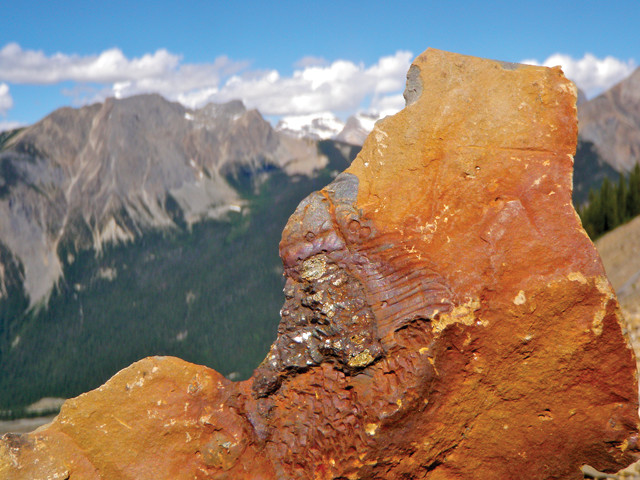
by Mary Caperton Morton Wednesday, April 19, 2017

Trilobites are sometimes found preserved in pyrite, such as this specimen from British Columbia. Credit: Mary Caperton Morton.
Trilobites were one of the most successful groups of animals to ever scurry across the seafloor, thriving for more than 270 million years. But how they reproduced has long been a mystery, since no fossil had ever been found with preserved eggs or genitalia. With the discovery of a cluster of trilobite eggs preserved in pyrite in upstate New York, however, scientists are getting the first glimpse of how these early arthropods reproduced.
The Lorraine fossil group, near Utica, N.Y., is famous for its pyritized fossils, in which animal exoskeletons have been replaced with iron sulfide. The newly discovered eggs — spherical, and each about 200 micrometers in diameter — were found in close association with a trilobite known as Triarthrus eatoni. The location of the ancient eggs in the specimen’s body — clustered around the back of the animal’s head — is similar to where modern female horseshoe crabs are known to release their unfertilized eggs.
The new find, described in Geology by Thomas Hegna of Western Illinois University in Macomb, lends support to the idea that trilobites likely spawned through external fertilization, releasing their gametes — eggs and sperm — through a pore near the back of the head. “If the T. eatoni reproductive biology is representative of other trilobites, [and] they spawned with external fertilization, [this was] possibly the ancestral mode of reproduction for early arthropods,” Hegna and his colleagues wrote.
© 2008-2021. All rights reserved. Any copying, redistribution or retransmission of any of the contents of this service without the expressed written permission of the American Geosciences Institute is expressly prohibited. Click here for all copyright requests.